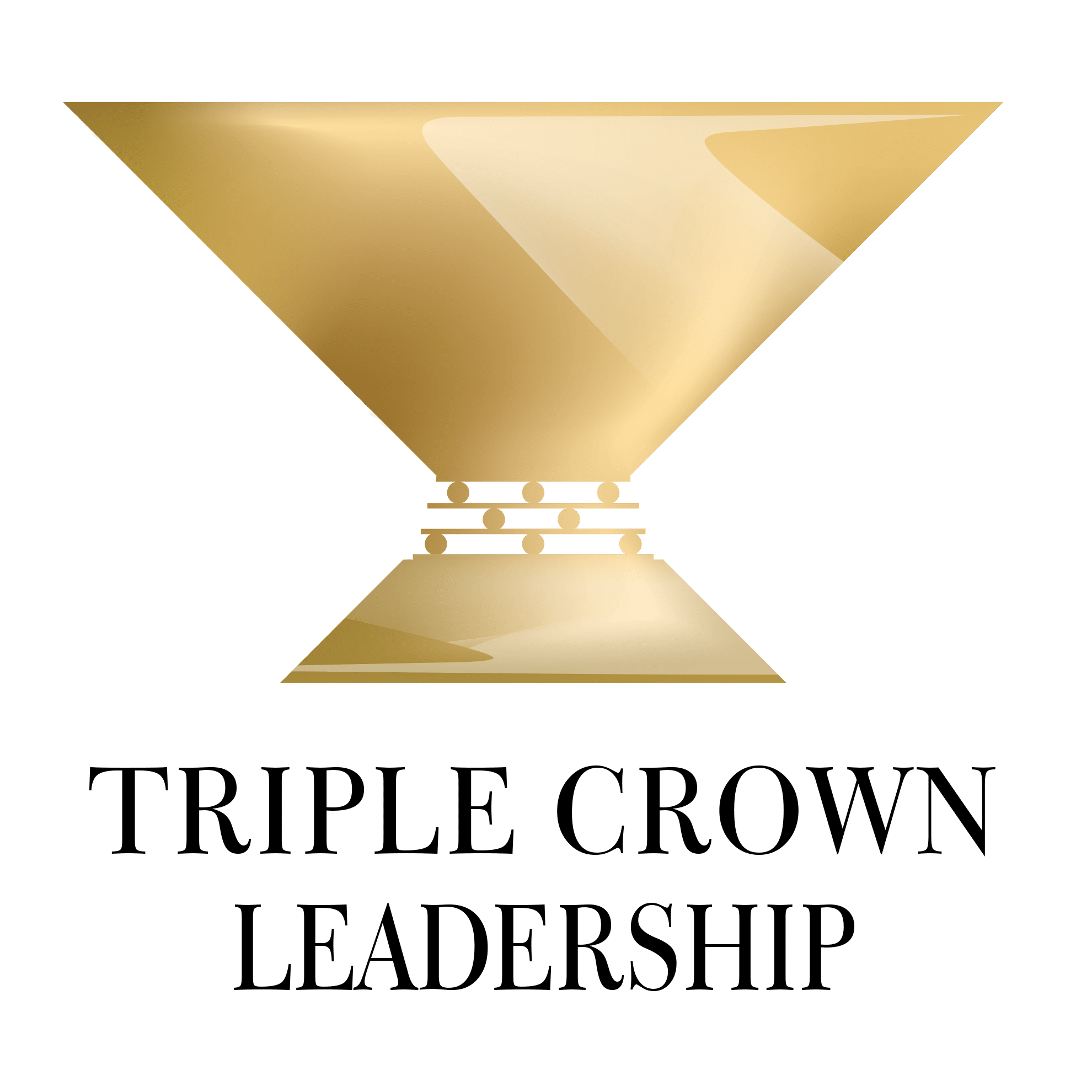
Helping People Reach Their Potential
Interview of Matthew Malone, President and Chief Operating Officer of Graham Corporation, by Gregg Vanourek, co-author of Triple Crown Leadership: Building Excellent, Ethical, and Enduring Organizations, for Leadership Jeffco.* +++ Gregg Vanourek: Matt, where did you grow up, and who influenced you most during your formative years? And how? Matt Malone: I grew up in Rochester, New York, with two working parents and a younger brother. My parents were both middle-class and believed in working hard. My Dad was at NCR for 35 years. It was a very committed relationship with his career, where there was continual progress. He

Leading through Chaos and Uncertainty
Article Summary: Leaders these days face daunting challenges in navigating chaos and uncertainty while keeping their teams focused and aligned. Practical strategies to help leaders adapt effectively and lead through turbulent times with clarity and confidence. +++ Leading through chaos and uncertainty is challenging for any leader. Rapid change, unexpected disruptions, and pervasive anxiety can shake even the most seasoned leaders. Beyond their normal challenges, leaders today must also contend with tariff turmoil, trade tangles, supply chain scrambles, stock and bond market gyrations, inflation and interest rate instability, and rapid technological, political, and regulatory changes. How are you managing all

Elevating Your Leadership
How can you take your leadership from bad to better? What are the best ways to elevate your leadership? Dr. Barbara Kellerman, Fellow at the Harvard Kennedy School’s Center for Public Leadership, is a prominent scholar of bad leadership (including both poor performance and unethical behavior). In her book, Bad Leadership: What It Is, How It Happens, Why It Matters, she categorized bad leadership into seven primary types: incompetent, rigid, intemperate, callous, corrupt, insular, and evil. And in her latest book, Leadership from Bad to Worse: What Happens When Bad Festers, Kellerman examines how and why bad leadership intensifies over

What Followers Can Do about Bad Leaders
Too often, we focus on leaders while neglecting the critical role that followers play in teams, organizations, institutions, and nations. These days, we face major problems with bad leadership, so we’re wise to address what followers can do about bad leaders. In her book, Bad Leadership: What It Is, How It Happens, Why It Matters esteemed leadership scholar Dr. Barbara Kellerman* examines the critical role of followers and shows how they can not only collaborate with bad leadership but sometimes even cause or facilitate it. (When talking about bad leadership, she means ineffective and/or unethical leadership.) More recently, she wrote

BAD Leadership: 7 Types
What is bad leadership? What are its signs? How to know if leaders are good or bad? Esteemed leadership scholar Dr. Barbara Kellerman addressed these questions and more in her book, Bad Leadership: What It Is, How It Happens, Why It Matters. Kellerman has argued that we’ve been naïve to focus too much on good and great leadership. She makes the case that the dark side of leadership isn’t an aberration. It’s common so we need to stop ignoring it and face it head-on. In Bad Leadership, Kellerman identifies seven primary types of bad leadership. It’s valuable to examine how

Why People Fall for Toxic Leaders
Toxic leaders inflict great damage on our organizations, communities, and nations. They draw us in with bold promises and then turn around and wreak havoc. It’s important to understand the phenomenon of toxic leaders, especially why people fall for them. Before diving in, let’s define terms. When something is toxic, that means it’s poisonous and can cause great harm. When it comes to leaders, it involves inflicting lasting damage and maliciously abusing power. A prominent scholar of toxic leadership, Dr. Jean Lipman-Blumen, founder of the Connective Leadership Institute and Professor of Organizational Behavior at the Drucker School of Management at

Great Leaders Prioritize Learning–Why and How
Great leaders prioritize learning because they understand that continuous growth is key to sustained success. Doing so helps them adapt to an ever-changing world while setting an example for their teams. According to Jim Kouzes and Barry Posner in The Leadership Challenge, “…researchers have found a strong relationship between learning and leadership effectiveness. Being able to reflect on your experiences, and subsequently to adjust and engage in new behaviors, is the single best predictor of future success in new and different managerial jobs…. Learning is the master skill.” “The ability to learn is the most important quality a leader can

Unlock the Power of Purpose in Your Work and Leadership
Article Summary: How you can transform your work and leadership with the power of purpose. Excerpts from Gregg Vanourek’s conversation on purposeful leadership and work with best-selling author, Richard Leider, shortly after the release of his new book, The Power of Purpose: To Grow and to Give for Life (4th edition), with David Shapiro.* +++ Gregg Vanourek: Many people, when they’re doing a job search or contemplating a career change, don’t spend enough time vetting the place where they’re going. With the balance of power between workplace and worker, we tend to defer. We’re just trying to get a paycheck. Richard,

3 Things Ethical Leaders Ask and Say
As a leader, you’re probably under a lot of pressure: Hit your targets. Move faster. Motivate your team. Put out fires. Innovate. And all this while maintaining your organization’s reputation and being ethical. What are key things you can do to uphold what we call the “ethics imperative” (doing the right thing, even when it’s costly or hard)? Here are three things ethical leaders ask and say often: Is this a good organization? Would this serve us all well over time? We’re not doing that. We address each in turn below, with examples. 1. Is this a good organization?

17 Steps to a Thriving Ethical Culture
When it comes to promoting ethical behavior in your organization, it’s not just about your own actions. It’s about building an ethical culture in which doing the right thing is not only encouraged but expected, demanded, and incentivized. In such a culture, everybody knows that character counts. They’re committed to pursuing great results (the excellence imperative), but always with integrity (the ethics imperative). The Prevalence of Integrity Problems in Organizations How are organizations doing with integrity issues? Alas, not so good. According to the EY Global Integrity Report 2024 (1): More than one in five (21% of) respondents admit that

How to Prioritize Ethics When Leading People
When leading people, too often leaders focus on performance while neglecting ethical considerations. Big mistake. Many organizations are deficient in their ethical leadership practices. To be truly successful, organizations must not only be excellent but also ethical—and not just now but over time. It’s what we call “triple crown leadership”: excellent, ethical, and enduring. 16 Key Ethical Leadership Practices When Leading People How can you integrate ethical considerations into leading people? Here are 16 key ethical leadership practices: 1. Make a clear and unequivocal commitment to the ethics imperative. That means having an explicit and firm obligation to

How Ethical Leaders Approach Decision-Making
Ethical decision-making is a cornerstone of effective leadership. It influences not only your organization’s reputation but also its long-term success and societal impact. Navigating the complexities of ethical dilemmas is no simple task. Leaders often face pressures, competing interests, and ambiguous situations that challenge their judgment. Unfortunately, many leaders fall short in this critical area. Too often, they crack under pressure, compromise, and sell out. Or prioritize short-term gains. The result? An erosion of trust, which undermines their leadership and harms their organization’s brand. Ways Ethical Leaders Approach Decision-Making Ethical leaders are intentional and strategic about decision-making. Here are

Ethical Leaders: What They Do That Others Don’t
What are the signs of ethical leadership in action—the things that ethical leaders do that others don’t? Ethical leaders pay attention to how their organizations and teams achieve their results. We know from research that honesty is one of the top things people look for in their leaders. And that whether managers are observed to behave ethically or unethically makes an enormous difference on workers. When their managers are observed to behave unethically, workers report feeling much more pressure to behave unethically at work, are much more likely to observe unethical conduct in the workplace, and are much less likely

Business Ethics: How Are Today’s Companies Doing?
Since we’re living in a time of declining trust and confidence in organizations and institutions of all kinds, from Congress and the medical system to televised news and the Supreme Court, it’s fair to ask how we’re doing with business ethics. How prevalent are companies that operate with integrity? What’s the extent of unethical and illegal behavior? How does the picture look not just at the organizational level but also at the individual level, with workers, managers, and board members? Unfortunately, the picture is bleak. The EY Global Integrity Report 2024 is based on a survey of more than 5,000

Leadership, Risk, and Cognitive Biases
Article Summary: What leaders need to know about risk and cognitive biases. Assessing and managing risk is hard enough on its own for leaders, but it’s made even more difficult by cognitive biases. Examples of several cognitive biases and how they can challenge leaders and organizations, plus two techniques for addressing them. +++ When it comes to risk-taking and risk mitigation, leaders need to be aware of the dangers of cognitive biases on decision-making. Esteemed psychologist Daniel Kahneman and his long-time collaborator, Amos Tversky, highlight that humans often have what they call “severe and systematic errors” in their thinking due

